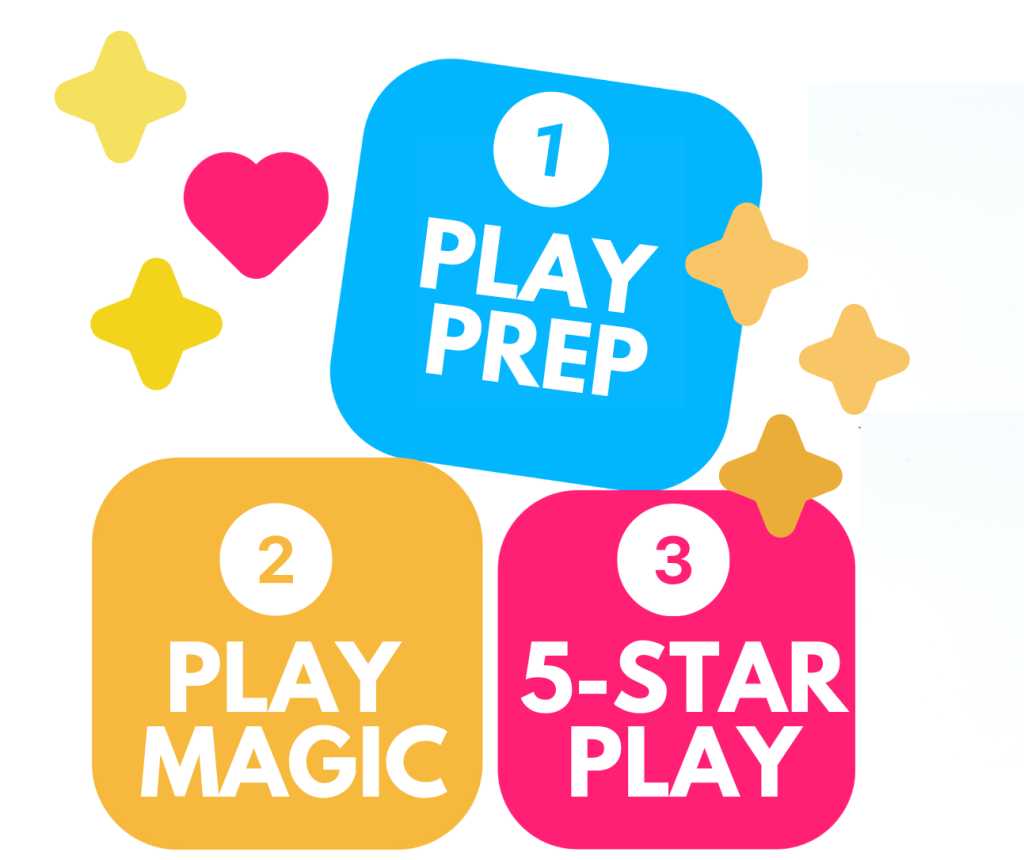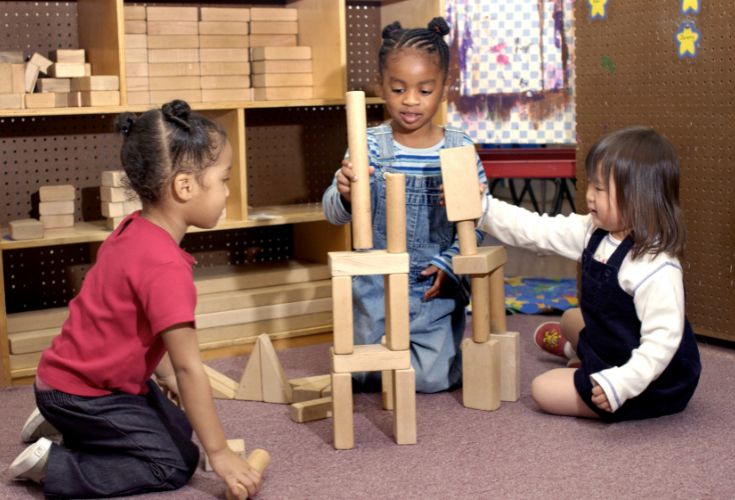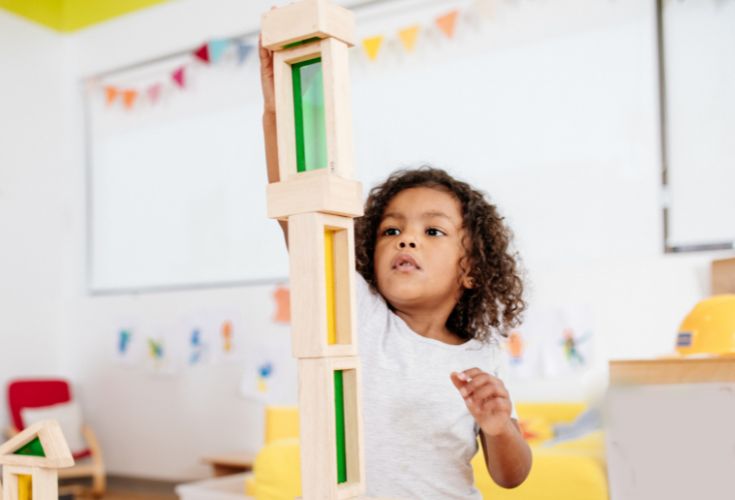Welcome to Preschool STEAM!
Sign up for our weekly newsletter that sends STEAM inspiration and ideas directly to your inbox.

Hi, I’m Jamie, and I help preschool educators and parents bring play-based STEAM into their learning environments, sparking curiosity and helping children become the innovative thinkers of tomorrow—through the power of play.
What is Play-Based STEAM?
STEAM stands for Science, Technology, Engineering, Art, and Math. You may already know STEM, but STEAM includes the Arts—everything from music and movement to drama and visual arts—adding creativity to the core of learning.
But play-based STEAM is more than just adding an art project. It’s about harnessing the power of play to inspire hands-on exploration, encouraging children to discover, experiment, and engage with STEAM concepts in a fun and meaningful way.
Why Play-Based STEAM Matters
Play-based STEAM helps children learn by doing—through self-directed play. It encourages them to ask questions, investigate, and think critically while developing problem-solving skills. It’s a natural way to spark creativity and foster a lifelong love of learning.
The Preschool STEAM Play System
To make play-based STEAM easy for educators to implement, we developed the Preschool STEAM Play System—a simple, effective framework to guide your students’ learning through play.

Here’s how it works:
1. Play Prep
Set the stage for discovery. Prepare your learning environment with materials that invite curiosity. Whether it’s blocks for building, art supplies for creating, or science tools for exploring, Play Prep ensures children are ready to dive into play-based STEAM activities.
Example in Action:
Imagine setting up a table with various building materials like blocks, popsicle sticks, and paper rolls. Children are encouraged to explore, build, and test their ideas—naturally learning about balance, structure, and engineering.

2. Play Magic
This is where the fun begins. Let the children lead as they explore and experiment. Through open-ended play, they’ll investigate, ask questions, and experiment with STEAM concepts. Your role is to observe and encourage their creativity without interrupting their natural flow of discovery.
Example in Action:
As children begin building, they start testing which materials make their structures more stable. They may try different combinations and see what works best, sparking discussions about stability, weight, and construction.

3. 5-Star Play
This is where learning deepens. After observing the children’s play during Play Magic, guide them by introducing more structured activities or challenges based on what they’re already exploring. This step builds on their natural curiosity, tying the play experience to STEAM concepts like creativity, critical thinking, communication, and collaboration.
Example in Action:
During Play Magic, you observe that children are building bridges but their structures collapse when they place heavier objects on them. You can guide this learning by asking, “What could you add to your bridge to make it stronger?” This shifts their thinking from simple construction to problem-solving and engineering, encouraging them to test new ideas and strengthen their design.

Bringing the Play System to Life
Teaching can be overwhelming, and finding the time to create these rich experiences may feel impossible. That’s why the Preschool STEAM Play System is designed to be simple, practical, and adaptable. Whether you’re short on time or feeling overwhelmed, this framework makes it easy to integrate play-based STEAM into your day.
Ready to Get Started?
Start with our free guide or join our STEAM Pathways membership to access exclusive lesson plans, resources, and activities that will bring the Play System to life in your classroom.
